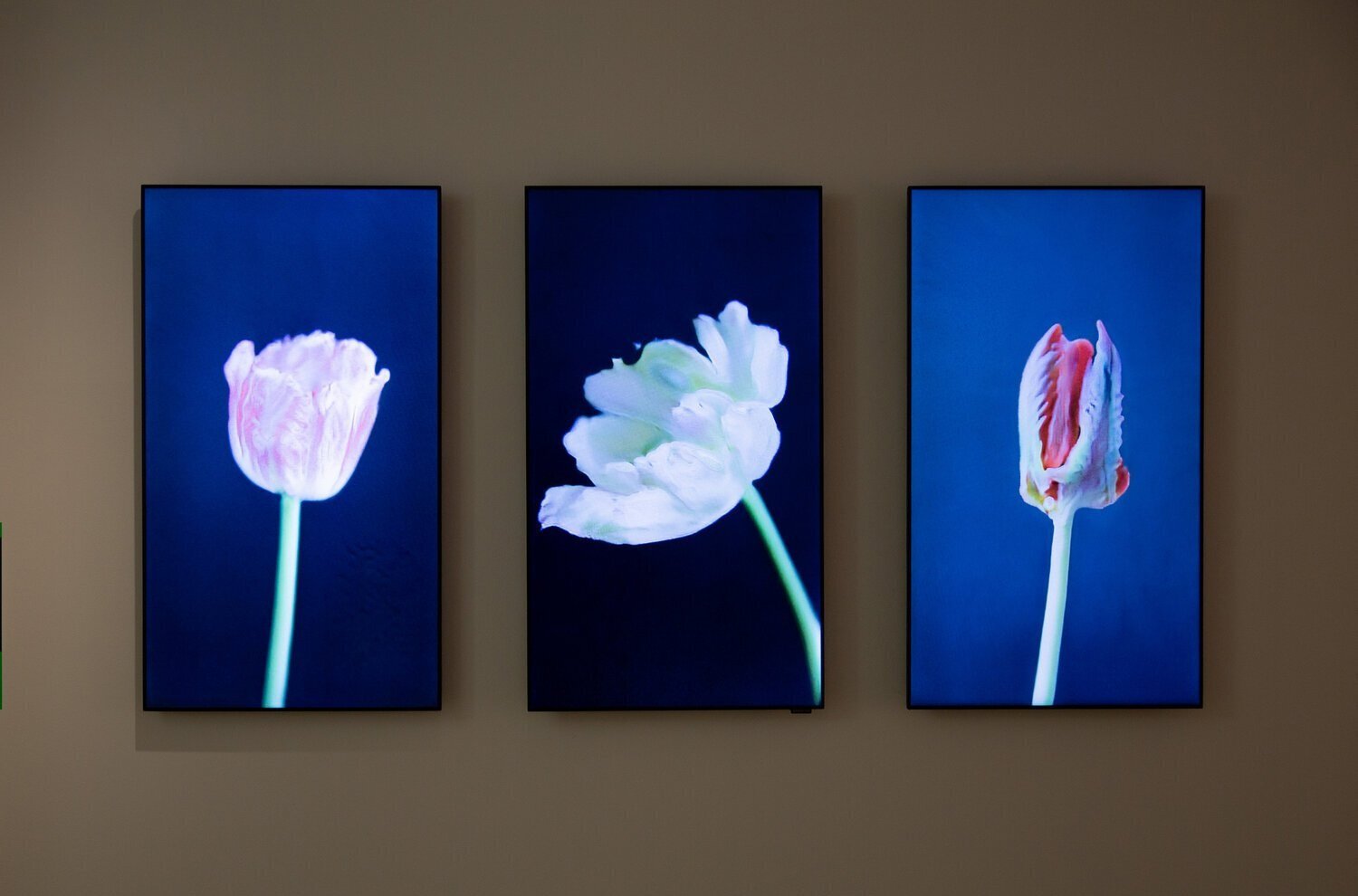AI, Ethics, and the Role of the Artist
Image: Anna Ridler, Mosaic Virus, 2019, 3-screen GAN video installation, 30mins.
Using AI as an artistic medium comes with moral implications and responsibilities which can be difficult to anticipate. How can ethics help us unpick these? By SJ Bennett.
Artificial Intelligence (AI) can act both as mirror and material, human-machine amalgam and tool, providing a catalyst to reimagine and challenge the worlds we construct. AI allows artists to explore ideas and push boundaries in their work, collaborating in new ways with both people and emergent technologies. As such a potent medium for artistic work, it can also be a conduit for AI activism, often within the same project. An illustration of this is found in art projects which make the social implications of AI tangible, exemplified by artworks such as the Zizi Project produced by The New Real.
However, with great potential for social impact comes great responsibility. AI systems are often portrayed by narratives of objectivity and ethereality which obscure the complex, socio-political AI pipelines and supply chains that make AI possible. Also, AI systems are often anthropomorphized (seen as having human characteristics) and their inbuilt abilities overestimated, while their potential to reinforce existing societal problems is overlooked. When used for decision-making processes in sensitive areas such as policing, schooling and healthcare, for example, they can even result in discrimination against marginalised groups.
These issues are embedded in the use of AI for artistic aims. In creating works to be experienced by the public, artists contribute to wider perceptions and expectations of AI. Yet artists often wish to avoid explicit, prescriptive explanations. In doing so, they navigate the tensions (often subconscious) of balancing freedom to create engaging narratives with the unpredictability of audience reactions, and the artist’s ethical responsibility to that audience. This creates a situation of ambiguity and uncertainty, where this ambiguity forms a fundamental part of the act of creation and sharing of artworks, a valuable aspect of the work rather than a flaw to be dissected. And Simone de Beauvoir’s ethical reflections in The Ethics of Ambiguity can help us navigate this, embracing ambiguity as a fundamental part of both art and AI practice, acting as a catalyst for ethical deliberation and decision-making for audiences and practitioners alike.
How then should artists deal with these opposing possibilities, producing engaging art that satisfies their own creative intentions and social conscience, while being mindful of the ethical implications of their works, and without adding to AI’s mystification? What responsibility do artists have in contributing to their audience’s understanding of this technology? How can we understand the role of the artist in society when, for some, it is an explicit intention for their work to generate reflection on the implications of AI, but for others it is not?
Part of AI’s appeal for artists is that it enables exploration of the discrepancies between the real and the simulated. Artistic practices working with AI are often fluid and driven by the idiosyncrasies of the technologies, experienced as a symbiotic relationship; the AI output generates new inspiration for the artist and allows them to move beyond the binary to explore the shades in-between, materialising the unknown. The opportunities afforded by these characteristics position AI as an attractive medium. This can make its mystification more tempting when the artist is making art that acts as a framework upon which the audience projects its own interpretation.
Indeed, reflecting upon interviews with artists who used AI in their practice, Crawford and Stark describe tensions in creating AI art as forming a form of “ethics of ambiguity”; the notion that, although the outcomes of an act might be unknowable, the artist is still obligated to consider them to the best of their ability, and have a situated awareness of their role in their work and the implications of their actions. Crawford and Stark describe how the artists they interviewed were very conscious of the thread of ambiguity running through their works, from construction, to the material presentation and spatial location, to the experiences and knowledge audience members bring to interpretations and the moral implications of this.
This places a certain burden on artists’ shoulders. It is a responsibility of a different nature to that of, say, software engineers or technology companies who use AI to create tools for our daily lives. Artists working with AI need to recognise and respond to these responsibilities, but perhaps we as an audience can share this burden by exploring and understanding the contexts in which AI artworks are created. By doing so, we can hope for the activist intent in these works to be better realised, and for artists and audiences to have greater potential to contribute to the way technology shapes society and the way we live our lives.

